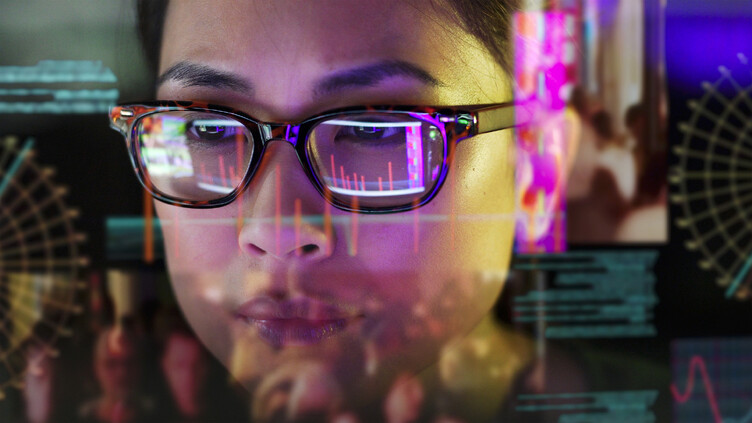
For thousands of years humans have tried to predict, manage, and control the future. Our ancestors looked for advice from oracles and read the stars. In more recent history, we have turned to science to determine future trends. But a fixed and knowable future doesn’t exist.
As I look back on 2023, I recognize – with immense gratitude – that I had the privilege of experiencing one of those rare moments in the history of technology when a technology emerges with the potential to completely reshape the future. Typically, the end of the year is a time to reflect and look back, but personally I prefer to look forward and consider how we will adapt to the multitude of possibilities an AI future will bring.
Generative AI is disrupting every industry, just like the internet did back in the 90s. Both disruptions have something in common: people are at the center. The internet took off because it was easy for non-technical users to adopt it. This is exactly what’s happening now with AI.
This signals the need for a skills shift. The World Economic Forum predicts that more than 40% of skills and 1 billion jobs will change due to new technologies by the end of the decade. Up-skilling and re-skilling are therefore crucial. We can’t know exactly what the future holds, but we can equip people to adapt and thrive in a changing environment.
In today’s world, it’s not about job security but skills security. Recognizing that job security is a by-product of skills security. By acquiring and adapting skills, individuals can position themselves even in the face of automation. Like a bird landing on a branch, it’s not afraid that the branch will break, because it knows it can fly.
Organizations must also understand their skills gaps so they can anticipate and quickly react to changes. At SAP, we’ve established a globally aligned skills taxonomy and we have prioritized baseline skills for development organizations such as AI, DevOps, and Security. These are the most sought-after skills in our industry, and we are making training available to upskill in each of these areas.
Increased skills transparency across SAP enables us to spot emerging trends, identify where we may have gaps, and prioritize learning investment. We used this process last year to ramp up our investment in AI learning even before the launch of ChatGPT accelerated this need.
But technical skills are only part of the equation. There’s a common misconception that we all need to develop highly technical or scientific skills to succeed, but I also see a growing need for people who are highly skilled in interacting with other people! That requires a resilient mindset, critical thinking, curiosity, adaptability, flexibility, not to mention creativity, collaboration, and interpersonal skills – most importantly: empathy. Those are core human abilities that are more relevant than ever in the age of AI.
We need to start enabling children at an early age. And this doesn’t mean teaching them how to use a device. They easily master that! But rather enabling them to unlock the potential of technology – while using data safely.
Watching my own children, I see how quickly and naturally they are able to navigate digital devices. But interacting with the data is not something that comes naturally. That must be taught. We need to teach children to interact with data discerningly to set the foundation for a future where they can use technology not just competently, but also responsibly, making informed decisions in a data-driven world. Instead of discouraging their exposure to technology, we should guide children towards a deeper understanding of how they can use it to create, learn, and explore. The goal is not just digital literacy but digital fluency – a profound understanding of technology that goes beyond the surface. Enabling children to be creators, rather than just consumers.
But we should not even stop there. I am a fan of Jack Ma’s advice: “We cannot teach our kids to compete with machines that will be smarter. We must teach our kids something unique, so that a machine can never catch up with us: values, believing, independent thinking, teamwork, care for others – the soft skills – sports, music, painting, arts, to make sure humans are different from machines.”
I believe a human-AI partnership provides the best of both worlds – creating more value than either can alone. It’s a duet and not a duel. So, companies need to invest in talent as much as technology. And parents, as well as educators, have a crucial role to play in guiding their children towards an AI future.
Next year will be about taking all people along on the AI transformation journey. Here’s to 2024 – an uncertain, but exciting future!
Read the article originally published in SAP News here: Being Human in the Age of AI | SAP News Center


